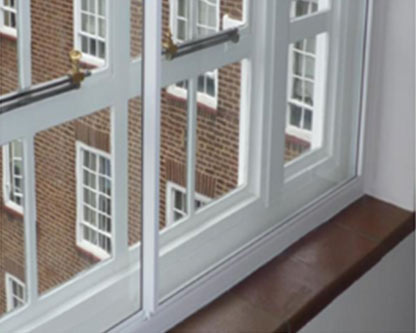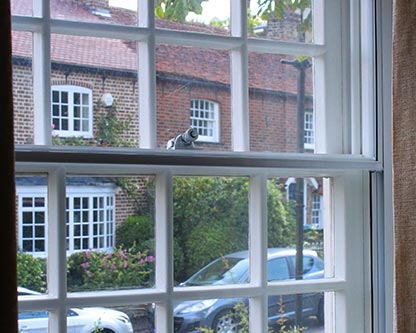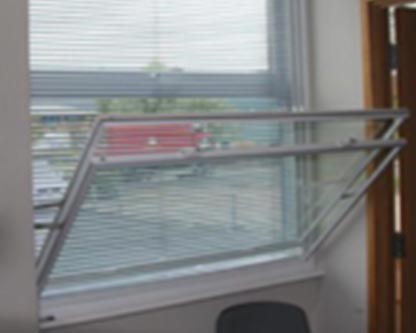
Secondary glazing is a popular choice when it comes to the problem of how to improve the thermal efficiency and sound proofing of sash windows and casement windows in listed buildings and period properties, by installing secondary glazing you can keep the look of your period property intact with internal sightlines remaining the same and at the same time complying with planning guidelines for conservation areas and listed buildings.
There are many styles and configurations of secondary glazing to suit the layout of your original sliding sash windows, casement windows or more modern variations , below you will find a comprehensive range of styles and variants of our secondary glazing systems to suit your every need, if you need any more help please don’t hesitate to contact us.
Horizontal Sliding
 Great for period casement windows as you can match all the mullion
sections, our secondary glazing systems can go up to a five-panel
configuration.
Great for period casement windows as you can match all the mullion
sections, our secondary glazing systems can go up to a five-panel
configuration.Vertical Sliding
 Vertical sliding secondary glazing is the perfect match for sliding
sash windows as they match up with the central meeting rails giving you a
non-obstructed view from your period sash windows.
Vertical sliding secondary glazing is the perfect match for sliding
sash windows as they match up with the central meeting rails giving you a
non-obstructed view from your period sash windows.Deluxe Vertical Sliding
 This style of secondary glazing is the deluxe version of the vertical
slider, this variant can be tilted inward up to 45 degrees to allow
easy cleaning and access behind the secondary glazing system.
This style of secondary glazing is the deluxe version of the vertical
slider, this variant can be tilted inward up to 45 degrees to allow
easy cleaning and access behind the secondary glazing system.
Where can Secondary Glazing be used?
https://www.kensington-secondary-glazing.co.uk/Styles-of-secondary-glazing.php
Secondary glazing systems really come in to there own when you have limitations on how you can improve the thermal efficiency of your windows and to reduce noise pollution. This is mainly if you own a listed building or live in a conservation area and conventional double glazing is not an option for your property due to planning restrictions and government guidelines, in some instances you can fit slim double glazing but this is hit and miss as it is up to the discretion of your local conservation officer, if slim double glazing is an option you would like to pursue check out our sister company Kensington sash window restoration.So secondary glazing is the obvious choice in these circumstances as it drastically reduces heat loss, cuts down on noise and is easily fitted without any major disruption or mess, most average sized homes can be fully completed in 1-2 days.
OPTIONAL EXTRAS
Fly screens are a completely clear addition that allows your home to be ventilated with fresh air and simultaneously keeps out insects.Our secondary glazing systems can be formed in to awkward shapes like arches to suit the apertures of your window openings.
FINISHES
All of our secondary glazing systems are available in three standard colours White, anodized Aluminum or Brown, but we can spray the frames in any RAL colour for an extra cost.GLASS
All our standard secondary glazed units come pre-glazed with 4mm clear toughened glass as standard, but these can be replaced with Laminated, sound reducing glass or low-E glass if required.Maintain the character of your home

Improve thermal performance

Quality products installed to the highest standards

More affordable than replacing your windows

Approved for use in conservation areas




No comments:
Post a Comment